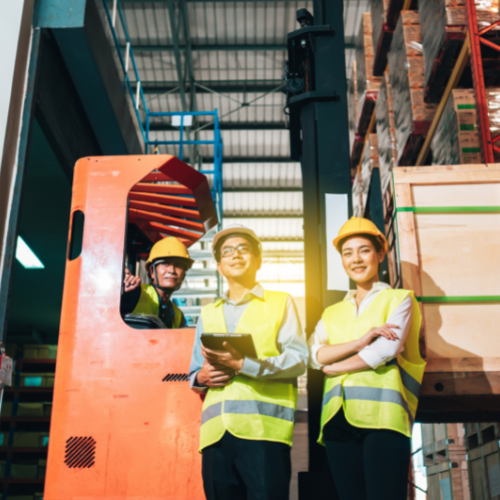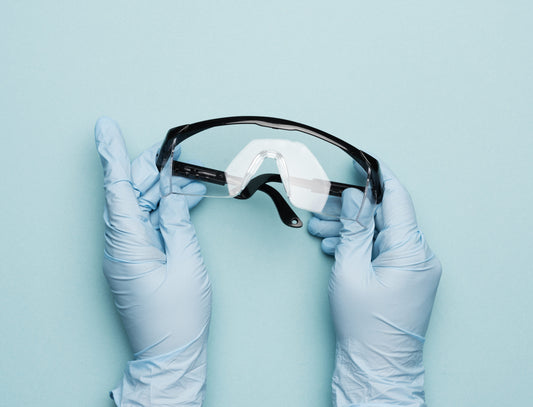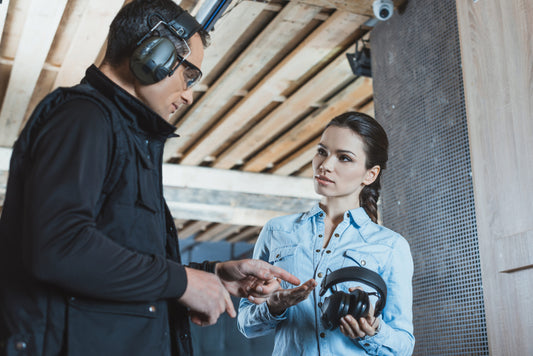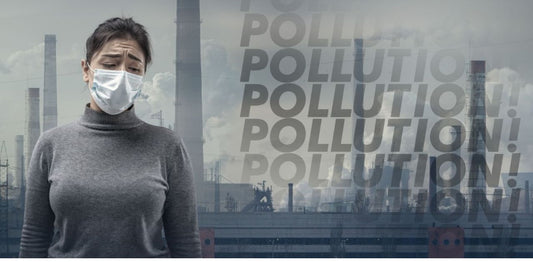
Safety Vests: The Definitive Guide
Safety is one of the most important factors to consider while hunting for a new job. Some professions are relatively safe, for example, working a desk job. However, other jobs, including physical labour or working on your feet, are more prone to dangerous situations. Safety protocols and training are emphasized even more at these jobs to prepare individuals for any scenario.
Safety vests make individuals working in certain trades identifiable. It becomes their lifeline to some extent. You could be driving down a road where a construction zone takes up 1 lane or walking by a factory to spot individuals working on the assembly line. Employees working in these environments all have 1 thing in common: the safety vests they wear over their clothing.
Functions of safety vests
Safety vests are worn over clothing, their primary function being visibility. The secondary function of a safety vest is reflectivity. When these vests are worn, any light shown on them will reflect and illuminate the individual wearing them, thus making these safety vests crucial for people working in construction, traffic, emergency, and transportation lanes(to name a few).
Essentially, safety vests thrive in any environment where low visibility will become an issue. You may have seen multiple scenarios where individuals are wearing safety vests. Some have reflective strips on the shoulders; others have an X-shaped design on their back. These safety vests protect those individuals when visibility/weather conditions are poor.
High-quality safety vests are necessary for work with a higher potential for physical accidents. The Canadian government has mandated that any individual working near poor visibility and low-light work sites must have HVSA while working. (HVSA) is an abbreviation for High-Visibility Safety Apparel. Safety vests fall under this and fulfil this need for added protection in places with an increased risk of danger.
How to choose the right safety vest
Are there different factors that go into choosing the right safety vest? Is there even a difference between them? These are valid questions when purchasing a safety vest, so let’s get into more detail.
3 Types of Safety Vests
There are 3 different types of safety work vests:
- Class 1 vest
- Class 2 vest
- Class 3 vest
The main difference between each class of safety vest is the reflective power and visibility that each provides, which can be further explained in three categories:
1. Reflective Tape
The first category is the amount of reflective tape on the different classes of vests. Each class of reflective safety vest must have a minimum amount of reflective tape in feet squared.
| Vest Class | Reflective Tape Required |
| Class 1 | 12.9 ft² sq |
| Class 2 | 16.75 ft² sq |
| Class 3 | 25.8 ft² sq |
- Class 1 vests have the least reflective tape on them, with 12.9 square feet over the vest. Workers who use a class 1 vest work in relatively safe environments, so the required amount of reflective tape is less.
- Class 2 safety vests have more reflective tape than class 1 and have 16.75 square feet on them. In class 2, workers wearing safety vests deal with more intense working conditions, thus requiring more reflective tape.
- Class 3 vests contained the most reflective tape, with at least 25.8 square feet. These vests are used for those workers who know they will be moving a lot and working near dangerous sites; therefore, the maximum amount of reflective tape is needed.
2. Traffic Speeds
The second category for differentiation is how well each class of safety vest performs during high-speed traffic situations tailored to those professionals who work near roads, railways, or any environment where motorised vehicles are dangerous.
| Vest Class | Traffic Speed |
| Class 1 | ~40km/h |
| Class 2 | ~40km/h |
| Class 3 | 80 – 100km/h |
Class 1 safety vests have been constructed to best suit situations with low traffic where vehicles are moving an average of 40km/h. Weather-wise, this safety vest should be low visibility but not too intense. For example, light fog, barely any rainfall, etc.
Class 3 safety vests are constructed for situations with high traffic speeds, and individuals work right next to the roads or railway where the speed of vehicles averages around 80 – 100km/h. Class 3 safety vests are generally worn by professionals such as emergency workers and road workers who work near highways. It is also highly recommended that individuals who work at night near roadways wear class 3 vests. Visibility conditions should be at its worst for class 3 vests, including heavy rainfall, snowfall, fog, etc.
3. Reflective Tape Placement
The last category in the differentiation of the safety vests is the reflective tape placement on the vests themselves. The placement differs from class to class as each vest plays a different role and is tailored to different activities.
Class 1 safety vests have reflective tape draping down each shoulder on both sides. This tape placement is simple and therefore tailored for simple tasks where a safety vest is still needed.
Class 2 safety vests also have their reflective tape vertically placed on each shoulder with an additional strip across the abdomen area placed horizontally. This tape placement is a bit more complex than class 1 vests, as the reflective tape can be seen from the front and an X-design on the back.
Class 3 safety vests contain the most reflective tape on the vest over the other vests. The reflective tape goes down both shoulders, across the stomach and on the sleeves, creating a high viz safety vest. The reflective tape creates 360-degree reflectivity for the individual for the heavy-duty professions.
Remember that certain jobs will require different levels of protection and class vests; it is best to confirm with your employer or co-workers which class level is required for your job site or activity. Furthermore, these categories will help you compare work safety vests to ensure you find a safety vest that works for you.
The above factors will help you when purchasing the right safety vest now that you know the difference between vest classes. To help you buy the perfect safety vest, check out our list of 5 best safety vests in 2022 below.
Review of the 5 best safety vests in 2022
1. HDX Hi-Vis Green 5-Point Tear-away Traffic Vest Home Depot
This safety vest from Home Depot is a class 1 safety vest with a standard fit, and a one size fits all model. It has breathable mesh, which makes wearing over hoodies or jackets easy and non-constricting. As a class 1 vest, it fulfils its duty of being light and keeping its reflective power low.
2. Hi-Vis Polyester Mesh Tear-Away Safety Vest | Pioneer
This vest is a class 2 safety vest with HV orange and yellow on the vest. It features polyester mesh, a radio phone clip strap and 4 sealed pockets. This safety vest is available in yellow, orange and black but is recommended in yellow as it provides the most visibility for the individual.
3. Pioneer 6926 Safety Tear-Away Vest – Hi-Viz Orange
This safety vest is a CSA Z96-09 Class 2 in orange. It includes polyester mesh lining, a 4-inch reflective tape Pen holder slot, a D ring access slot, and one size fits all.
4. Safety Vest | United Canada Inc
At number 2, we have the standard Class 1 safety vest from United Canada INC. This safety vest features orange polyester mesh and is perfect for wearing with jackets, hoodies and other thick layers. The vest also has hook and loop tab closures in the front for stability to ensure it doesn’t fall off. This vest is perfect for jobs that don’t require powerful reflective light.
5. Glowear Two-Tone X-Back Safety Vest, Type R Class 2
In the first place, we have the Glowwear Two-Tone X-Back Safety Vest, a Type R class 2 safety vest from United Canada Inc, that we highly recommend. This vest comes in different sizes to tailor towards each individual’s needs. Other safety vests only offer a one size fits all solution which can be challenging and a nuisance to the consumer. It features an X reflective tape back design, a D-ring access slot, 5 pockets, 4 placed outside and 1 inside, and is ANSI-compliant with 3M Scotchlite Reflective. This safety vest provides a generous amount of reflective power and is functional in all environments requiring safety vests.







